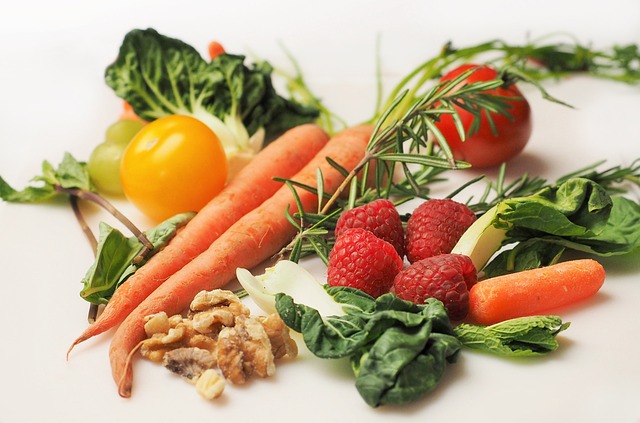
Cooking with Seasonal Ingredients: A Flavorful Guide
October 25, 2023
As the seasons change, so do the ingredients available in your local markets. Cooking with seasonal ingredients not only ensures the freshest, most flavorful dishes, but it also supports local agriculture and reduces your carbon footprint. In this article, we’ll explore the benefits of cooking with seasonal ingredients and provide you with a flavorful guide to what’s in season during each part of the year.
The Benefits of Cooking with Seasonal Ingredients
- Freshness: Seasonal ingredients are typically harvested at their peak of ripeness, resulting in better flavor and nutrition. You’ll notice a significant difference in taste when you use produce that’s in season.
- Cost Savings: When ingredients are in abundance, their prices tend to be lower. By cooking with seasonal items, you can enjoy high-quality ingredients without breaking the bank.
- Support Local Agriculture: Purchasing local, seasonal ingredients supports your local farmers and strengthens your community. It also helps reduce the environmental impact of long-distance transportation.
- Variety and Creativity: Cooking with seasonal ingredients challenges you to explore new recipes and be more creative in the kitchen. You’ll find inspiration in the ever-changing palette of nature.
A Flavorful Guide to Seasonal Ingredients
Spring (March to May)
1. Asparagus: These tender spears are a springtime favorite. Roast them with a little olive oil and lemon for a simple side dish.
2. Strawberries: Spring heralds the arrival of sweet, juicy strawberries. Use them in salads, desserts, or simply enjoy them fresh.
3. Peas: Fresh peas add a burst of sweetness to many dishes. Try them in a creamy pasta or as a side with butter and mint.
4. Spinach: Spinach is abundant in spring and works well in salads, sautés, and as a pizza topping.
5. Radishes: Radishes are crisp, peppery, and a perfect addition to salads and sandwiches.
Summer (June to August)
1. Tomatoes: Summer tomatoes are the stars of caprese salads, tomato sandwiches, and homemade sauces.
2. Zucchini: This versatile vegetable can be spiralized into “zoodles,” grilled, sautéed, or used in baking.
3. Blueberries: Fresh blueberries are perfect for breakfast, desserts, and snacking.
4. Corn: Nothing says summer like sweet corn on the cob. Grill it or boil it and serve with butter and salt.
5. Bell Peppers: Colorful bell peppers add a pop of flavor to salads, stir-fries, and fajitas.
Fall (September to November)
1. Apples: Fall brings a bounty of apples. Make apple pies, crisps, or simply slice them for a healthy snack.
2. Pumpkins: Beyond carving, pumpkins can be used for soups, pies, and roasted dishes.
3. Butternut Squash: Roast butternut squash for soups, risottos, or as a side dish.
4. Brussels Sprouts: Roast these tiny cabbages with a drizzle of balsamic vinegar for a delicious side dish.
5. Pears: Use ripe pears in salads, desserts, or to pair with cheese on a charcuterie board.
Winter (December to February)
1. Citrus Fruits: Oranges, grapefruits, and lemons are in season during winter, making them a bright addition to your meals.
2. Cabbage: Cabbage is excellent for coleslaw, soups, and stir-fries.
3. Potatoes: Roast, mash, or boil potatoes for comforting winter dishes.
4. Kale: This leafy green is perfect for hearty soups, salads, and sautés.
5. Carrots: Roast carrots with herbs or use them in stews and soups.
Tips for Cooking with Seasonal Ingredients
- Farmers’ Markets: Visit your local farmers’ markets to find the freshest seasonal produce. You’ll also have the opportunity to ask farmers for cooking tips and recipe ideas.
- Plan Your Meals: Create meal plans that revolve around the seasonal ingredients available. This will help you make the most of what’s fresh.
- Preserve for Later: When certain ingredients are in abundance, consider preserving them for later use. You can freeze, can, or pickle items like berries, tomatoes, and cucumbers.
- Experiment: Seasonal ingredients provide an excellent opportunity to try new recipes and cooking techniques. Don’t be afraid to experiment with flavors and textures.
- Enjoy the Full Season: Savor the full season of a particular ingredient. For instance, when strawberries are in season, make strawberry shortcakes, preserves, and salads to celebrate their presence.
Recipes to Celebrate Seasonal Ingredients
Spring Recipe: Strawberry Spinach Salad
Ingredients:
- 4 cups baby spinach
- 1 1/2 cups fresh strawberries, hulled and sliced
- 1/2 cup crumbled feta cheese
- 1/4 cup toasted almonds
- Balsamic vinaigrette dressing
Instructions:
- Toss baby spinach, sliced strawberries, feta cheese, and toasted almonds together in a large salad bowl.
- Drizzle with balsamic vinaigrette dressing just before serving.
Summer Recipe: Grilled Corn Salad
Ingredients:
- 4 ears of fresh corn, husked
- 1 red onion, thinly sliced
- 1 cup cherry tomatoes, halved
- 1/4 cup fresh basil leaves, chopped
- 2 tablespoons olive oil
- 2 tablespoons red wine vinegar
- Salt and pepper to taste
Instructions:
- Preheat your grill to medium-high heat.
- Brush the corn with olive oil and grill, turning occasionally, until charred and tender, about 10 minutes.
- Cut the kernels from the cobs into a large bowl.
- Add the red onion, cherry tomatoes, and basil.
- In a separate bowl, whisk together
